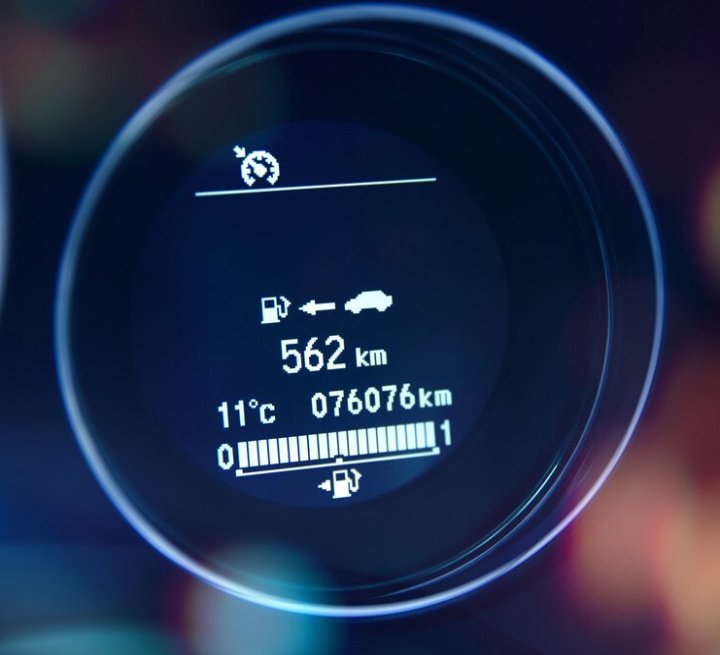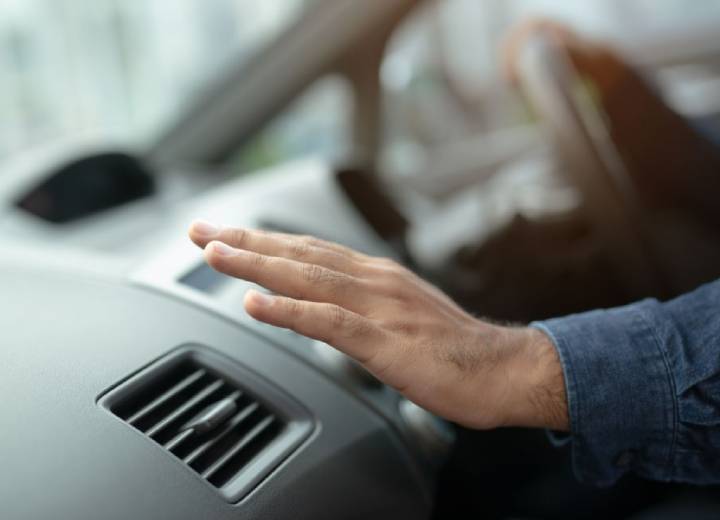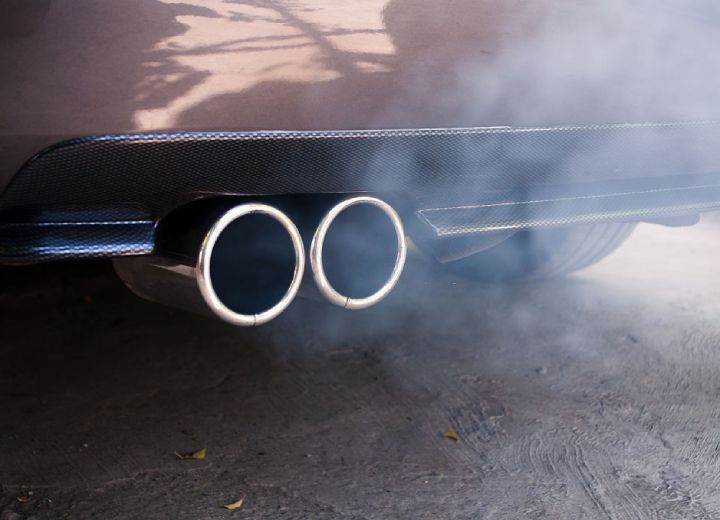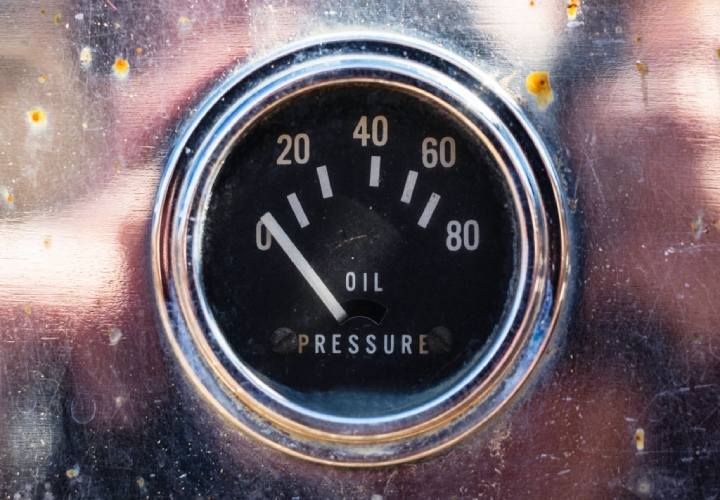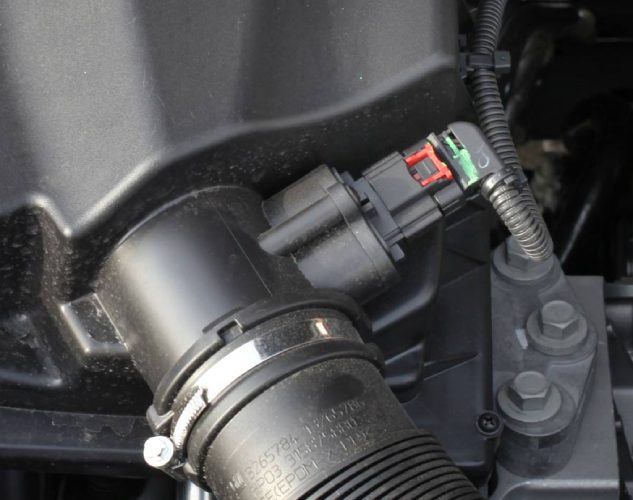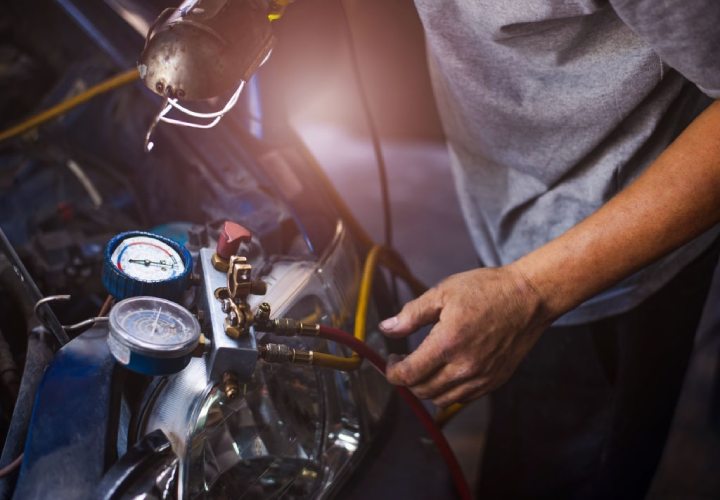There are three fluids that are very useful in any car, oil, coolant, and gasoline. Run out of any of these three, and you will likely pull over by the roadside or tow your car to the mechanic. While running out of gasoline is not so bad for the car, the story will be different if you were to run out of oil or coolant. Either of these would cause the engine to overheat and lead to more problems.
But what if you had an alternative? How good could it be? Like switching from gasoline to electricity in a hybrid car or using water only, or topping up a 50/50 mix of water and coolant instead of driving without any coolant.
Well, that is what I will be talking about in this article. Many people would like to know what will happen or how far they can drive with just water in their radiator.
Long story short, the distance you can drive by having just water in your car radiator will vary depending on the outside temperature and conditions but will be long enough to allow you to replace the water with coolant.
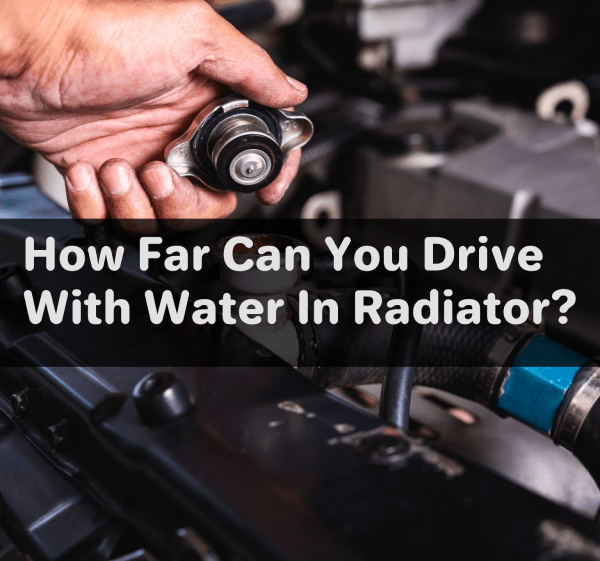
Can I run just water in my radiator?
Yes, you can run just water in your radiator. Water has great cooling properties because of its high specific heat. This means that it can absorb a high amount of heat before any significant change in its temperature. This single property gives water the ability to act as a coolant.
But before you run off and pour water into your radiator, I suggest you hold on to that thought for a while. There is a caveat to using water as a coolant. Otherwise, why would car manufacturers specify the use of chemical coolants?
What happens if I put water in my radiator?
This question may seem like a no-brainer. After all, water is as good as any other coolant. Yes and No. No doubt that using water as a coolant in your car’s radiator is not a bad idea; however, there are reasons why water is not often recommended and only used in exceptional situations.
First, water has a high freezing point, so if you live in very cold regions, then you shouldn’t put only water into your radiator. The water could freeze and damage the cooling system of your car in two ways.
The first way is by expanding and clogging up the system such that heat is no longer removed from the car’s engine leading to overheating, and two, by cracking the pipes and even the radiator. This could lead to a coolant leak and a lot of money spent on repairs. Of course, this depends on where you live.
Warmer climates are more friendly with water in the radiator since it never gets to the freezing point. However, there is another downside to using water in the radiator that affects even those living in warmer climates, corrosion. Water doesn’t have any anti-corrosion properties. Instead, the dissolved minerals in the water tend to accelerate corrosion in the engine.
Aluminum engine blocks are more prone to galvanic corrosion from impurities in ordinary water. Cast iron engine blocks, on the other hand, are more resistant. However, the effect is likely going to become noticeable as time goes on. This is why it is advisable to use demineralised water if at all you have to put only water in your radiator.
But using only demineralised water in cold weather is still risky, and I’m sure you now know why.
Finally, water evaporates at very high temperatures. As the water evaporates, the quantity left to cool down the engine as it heats up becomes less and less, causing the engine to overheat. This could damage your car’s engine in no time.
With coolants/antifreeze, you could avoid all the problems that come with using only water. Coolants contain corrosion inhibitors, a chemical substance that helps to protect your water pump and your car’s cooling system from corrosion.
Most coolants come mixed with antifreeze which can lower the freezing temperature of the liquid to as low as -35•F in a 50/50 mixture with water. The more the coolant/antifreeze, the lower the freezing point of the water.
How long can you drive with water in your radiator?
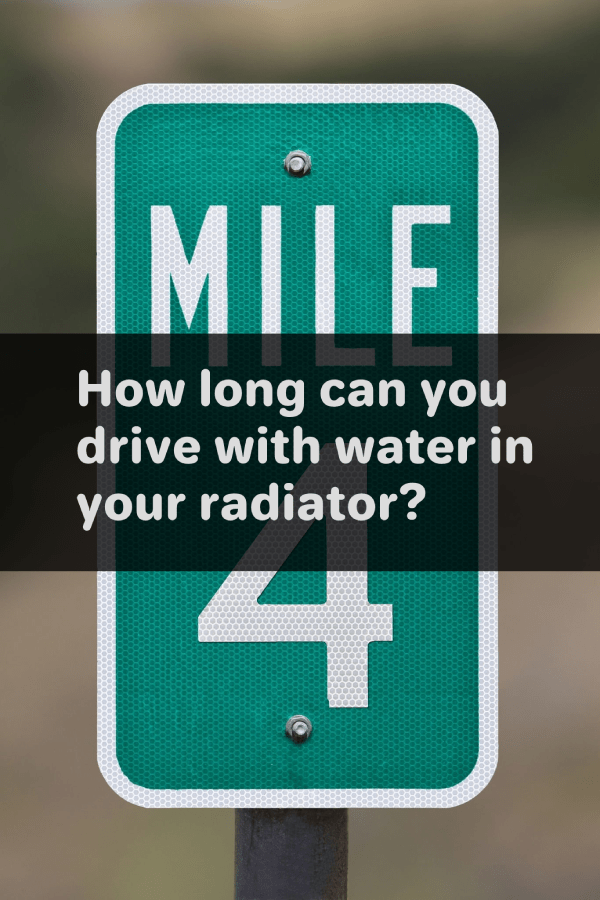
The answer to this would vary depending on who you ask, where you live, and your driving conditions. Starting with the distance you can cover using only water, many drivers claim to have made 3 to 4 miles without any damage to the engine.
Some only went a couple of hours or minutes. It all comes down to individual experience, and we don’t advise you to try it out to know just how far you could go before your car’s engine overheats.
But let’s say you live in a very cold region. Chances are that the water in your radiator will freeze in a matter of minutes. This may not happen while the cat is in motion since the heat from the engine will prevent the water from freezing.
But if you are to park the vehicle for, say, 5 to 10 minutes, then you might be in serious trouble. If the weather is quite hot (like in the summer), then you don’t have to worry about sudden freezes while parked. Instead, your car may overheat when in motion.
Hot summers increase the operating temperature of your car’s engine. The exact amount will differ depending on how hot the weather is, but generally speaking, cars are 50% more likely to overheat in hot weather.
This means your car’s cooling system will be working twice as much in hot summers compared to any other time of the year. It, therefore, becomes riskier to run on just water at such times of the year.
Talking about driving conditions, most people think it’s a matter of how long you drive with the water that matters. No, it isn’t. What matters most is the driving conditions. If you are on the highway with little to no traffic obstruction, then you could go for miles with just water without experiencing overheating.
On the other hand, if you are driving a short distance with frequent stops, your vehicle will likely overheat in a very short time.
The reason is that when driving on a long stretch of road, the blast of air on the radiator will help to regulate the engine’s temperature. This advantage is not available when you’re driving shorter distances and having to stop regularly.
Is it better to drive with no water in the radiator?
No. If you happen to run out of coolant, then your options would be to either use only water or drive empty. At this point, it’s better you use water. Remember, water is an excellent coolant, and using water for a short trip to the mechanic or supermarket to get a coolant for your car isn’t a bad decision.
Using water only becomes a problem if done repeatedly. So except your car’s engine can be air-cooled like the Volkswagen beetle or the Porsche 917, then you’re better off using just water than going empty.
What happens if I add water to 50/50 coolant?
Most coolants come premixed in a 50-50 ratio of water and coolant. Increasing the amount of water will produce a lower concentration of the mixture. This is not as bad as it sounds. However, when the water content is more, then there is a tendency that the original property of the coolant will be reduced. For instance, the freezing temperature of a 70-30 water-to-coolant ratio is going to be higher than that of a 50-50 mix.
This additional increase in freezing temperature is likely going to be followed by a decrease in the boiling point of the coolant. So instead of freezing at, say, -35•F, you now get -15•F (for example), and the boiling temperature, which should be very high (to guarantee that the fluid absorbs enough heat) will be lower.
The third problem that might occur will be will the lower concentration of anticorrosion property of the coolant. To avoid this, you should only add demineralised water and not ordinary tap water.
Do you put water in the radiator with the engine on or off?
Before topping up the coolant in your radiator, make sure your car’s engine is turned off. There are two reasons why you should turn off your engine. One, when the engine is turned on, the coolant immediately begins to circulate around the engine to cool it.
At this point, it is difficult to gauge how much water you’ll need, and you may end up adding way too much water. Two, if you’ve been driving for a while, then the coolant will be extremely hot, and this will make it difficult to pop open the reservoir cap.
If you successfully do this while the engine is still very hot, then you could get splattered by the hot coolant and suffer burns. Either way, it’s not worth the hassle.
Conclusion
Water is an effective coolant, but that doesn’t make it the right choice for your engine in the long run. However, it is a reliable option when you’re out of options. In this article, I’ve gone in-depth to explain the pros and cons of using just water in the radiator. It all comes down to how long you intend to drive with just water, the weather (winter or summer), and your driving conditions.
Iliah is the co-founder of Mechanic Ask, where he writes detailed step-by-step tutorials for repairs and mods. He also posts videos walking through things like engine swaps, suspension lifts, and tuning chips. Iliah uses his blog as an educational resource for car enthusiasts based on the knowledge he’s gained from 15 years as an ASE-certified master technician. His repair manuals provide even novice readers the confidence to take on big projects.

